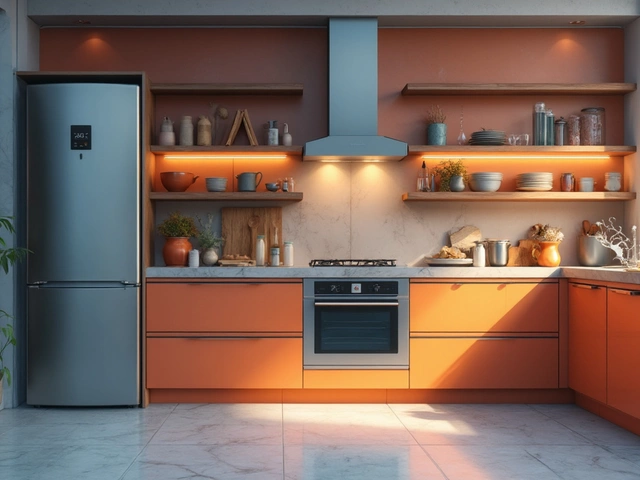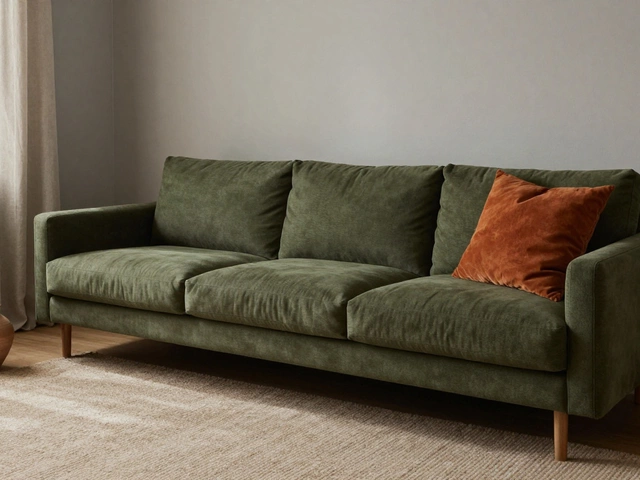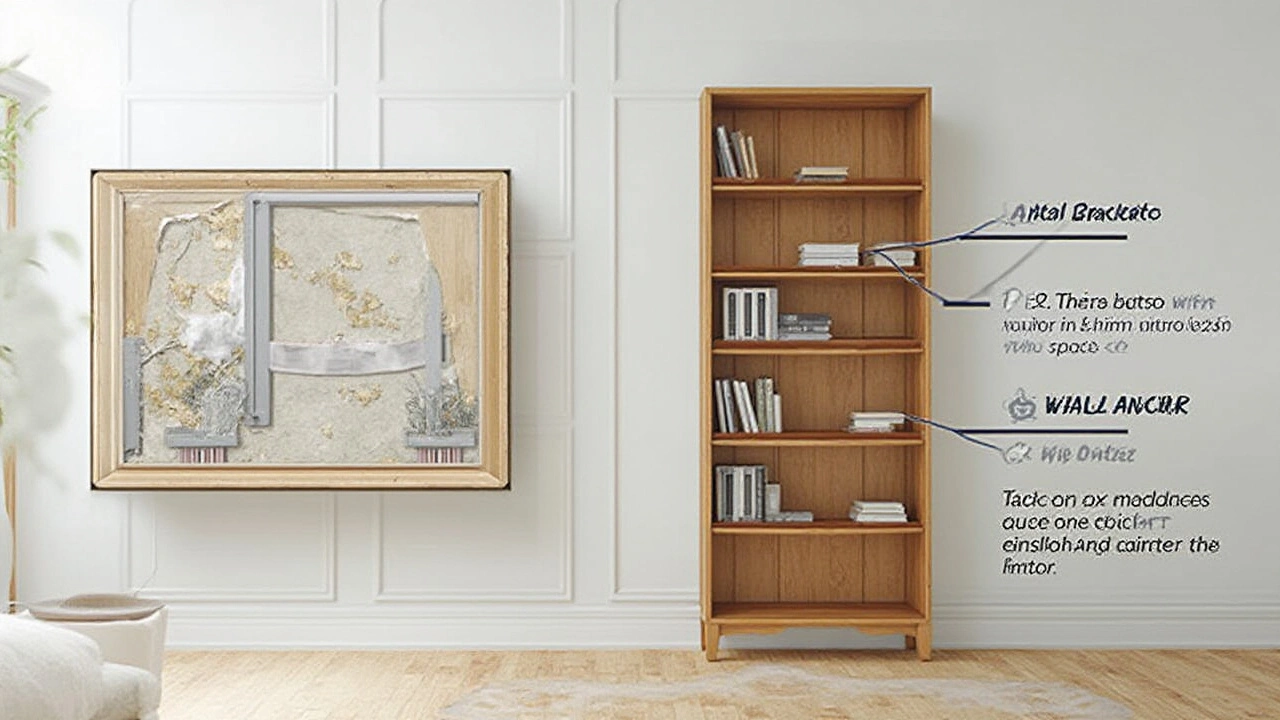
Ever heard a thump in the night and worried your bookcase just toppled over? Here’s the harsh truth: every year, kids—and sometimes clumsy adults—get hurt, or even worse, because furniture tips over. That heavy bookshelf packed to the brim isn’t just a storage solution. It’s easily tipped, especially if your floor is uneven or you’re in a seismic zone. The slick thing is, stopping this from happening doesn’t mean you need special tools or a builder’s license. It’s just about knowing which anchor works best for bookcases and how to fit it solidly.
Why Bookcases Need Anchors and What Happens If You Skip
When you set up a new bookshelf, it’s tempting to just fill it and call it done. But the stats prove that’s not enough. ACC in New Zealand logs about 80 injuries a year from toppling furniture. And it’s not just here—globally, tip-over injuries send thousands to the ER. Those numbers jump in homes with kids under six and anyone with pets who like to climb. It only takes a little nudge, a drawer pulled out, or some earthquake tremors for things to go pear-shaped. The taller and narrower your bookcase, the bigger the risk. Those with glass doors or adjustable shelves? Even more vulnerable.
Ignoring anchors can mess up more than your day. The heaviest shelves, especially ones loaded unevenly, act like levers the moment you pull a big book out or a cat jumps onto the second shelf. The damage isn’t just bumps and bruises, either. The New Zealand Consumer Magazine did drop tests on popular flat-pack bookcases. About half failed to stay upright under minor shake, mostly due to poor anchoring or none at all. So the consequences go beyond just damage—they’re real safety hazards.
Understanding why anchors matter means knowing what you’re dealing with. Bookcases come in every flavor—MDF, plywood, solid wood, metal frames—but they all share one weak spot: a high center of gravity. If it’s not fixed to something solid, gravity and accidents win, every time. Even the instruction booklets admit as much. IKEA, for instance, writes in its manuals that every Billy or Kallax needs to be anchored with the enclosed kit. It’s not just CYA—it’s a hard-learned lesson. You might think you’ll "watch out," but all it takes is one misstep, and the whole thing becomes a kinetic sculpture you never wanted in your living room.
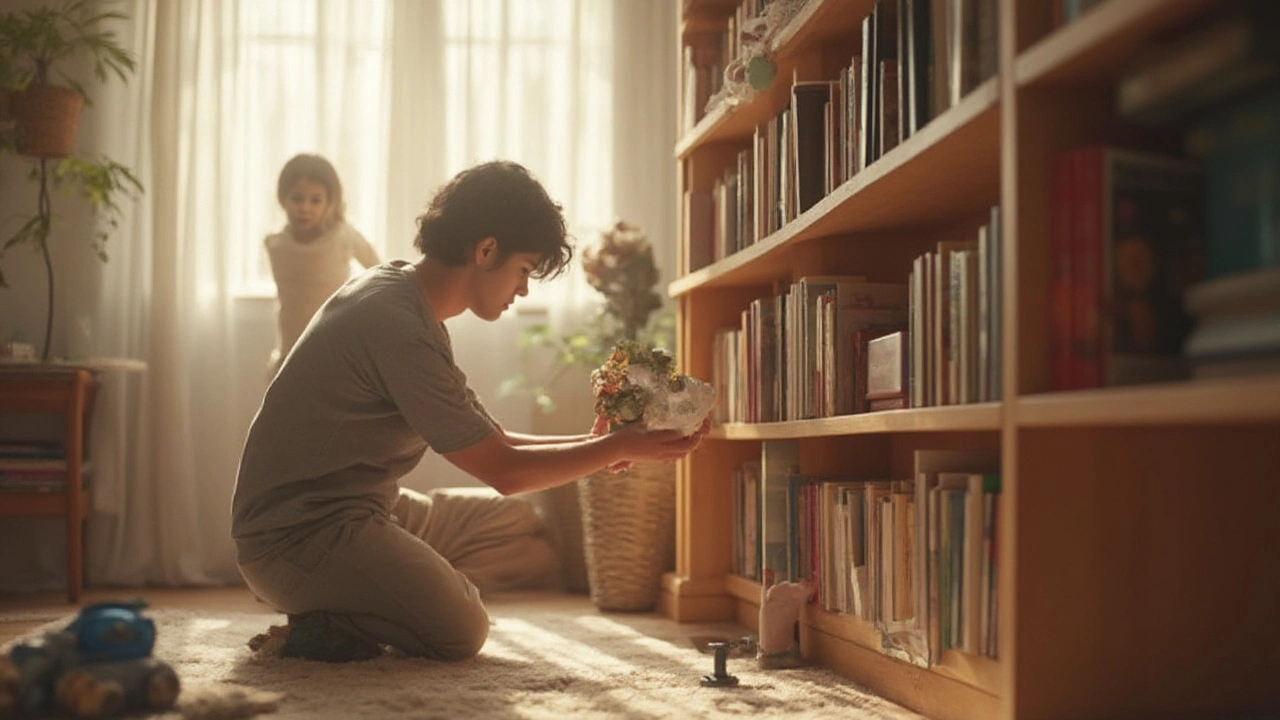
The Top Anchors for Bookcases: What Works and What Doesn’t
So, what’s the best anchor for a bookcase? The honest answer: it depends, but anti-tip kits and properly rated wall anchors stand out. The star players on the market are steel anti-tip brackets, heavy-duty nylon straps, toggle bolts, and stud-mounted angle brackets. Want quick and solid? Anchoring into a wall stud is the gold standard. Timber studs in New Zealand homes are usually 45mm thick, strong enough to handle heavy bookcases when combined with a steel bracket or strap. Look for kits labelled to hold at least 45kg (good for most bookcases fully loaded), and don’t go for those flimsy plastic bits that come with some budget furniture—they snap like a dry twig under pressure.
Here’s a simple comparison table of popular anchor types:
| Anchor Type | Holding Strength | Best For | Drawbacks |
|---|---|---|---|
| Steel L-bracket | Up to 90kg | Timber studs | Needs stud location, visible from sides |
| Heavy-duty nylon strap | Up to 60kg | Kids' rooms, flexible placement | Straps can loosen over years |
| Toggle bolt | 35-50kg | Plasterboard walls without studs | Leaves large hole; not reusable |
| Plastic wall plug | 10-20kg | Very light furniture only | Weak under real load, cracks easily |
Most folks pick whatever comes in the box, but anti-tip kits sold separately hold up best. One from Safety 1st, for example, held an 80kg bookcase in a 2023 Wellington Home Show test. Steel brackets outshine everything when fitted to studs. If you can’t find a stud, high-quality toggle bolts are next in line, but remember, plasterboard holds less weight—never count on it alone for a full-size bookcase. In rentals, adhesive hooks might seem tempting. Don’t bother. Adhesive pads rated “15kg”—sure, maybe if you never touch the shelf again. In reality, a humid Wellington winter and your anchor is on the floor within months.
Anchors made for babyproofing are especially tough. They come with clear ratings, long screws, and hardware that won’t rust. Some even have quick release options, so you can move your bookcase or paint behind it without hassle. With pets or frequent moves, flexible nylon straps work. For heavy collectors with dozens of hardbacks or records, double up with L-brackets—and, if you dare, pop for earthquake-rated models. After that 2016 Kaikoura jolt, some folks use both a stud screw top and bottom just for peace of mind.
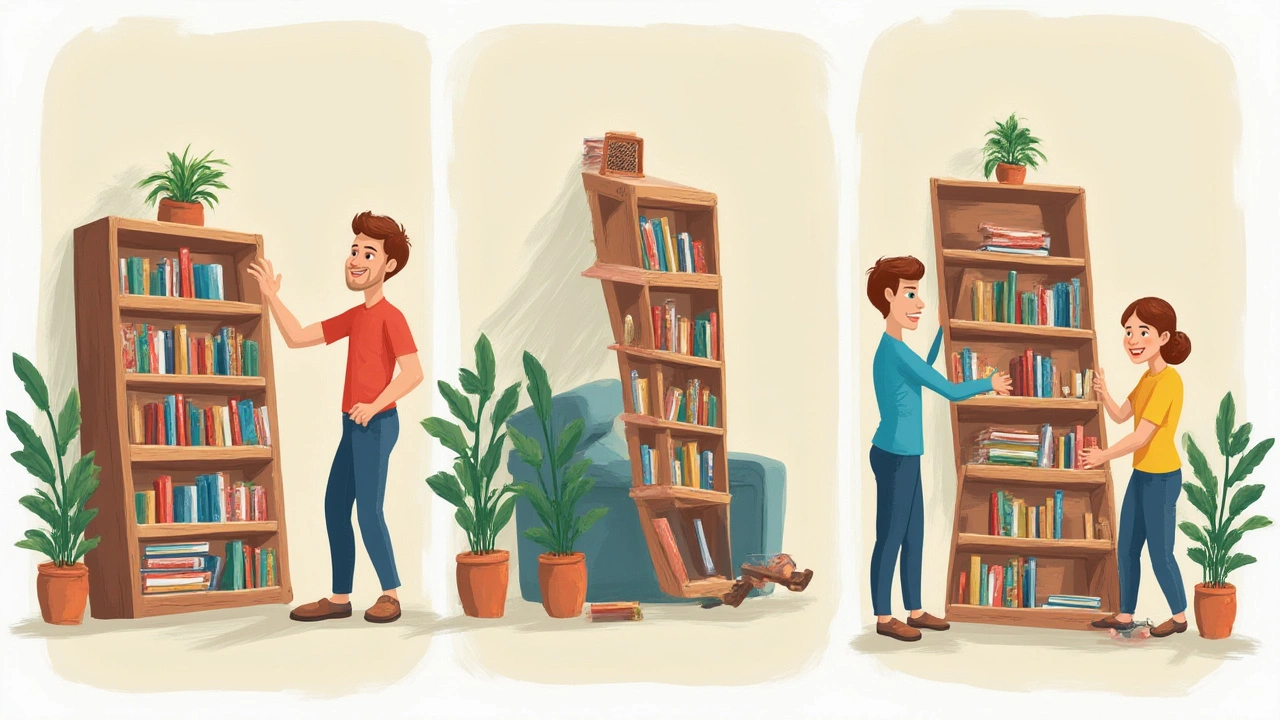
How to Anchor Your Bookcase Step by Step and Key Tips for Safety
If you’ve never handled a drill, don’t sweat it. Anchoring a bookcase feels like a big job, but it’s super doable. Here’s a no-nonsense step-by-step to get it done right:
- Empty the bookcase. Take every book, vase, or knick-knack off. You want it as light as possible while you work.
- Find the studs. Grab a stud finder. Run it along the wall where the bookcase sits. Mark where you find solid timber—usually about every 600mm in NZ homes.
- Align the anchors. Position your L-brackets or straps at the highest points on either side of the bookcase frame. Mark both the wall and the bookcase, making sure you’re hitting a stud behind the wallboard.
- Drill pilot holes. Use a wood drill bit just smaller than your screw. Drill straight into the stud, and do the same for the back of your bookcase (check for the right screw size for your unit).
- Attach the bracket. Secure one side of the bracket to the bookcase and the other into the wall stud. Tighten firmly but don’t overdo it—stripping the screw means starting over. If you’re using straps, attach both securely and pull them tight.
- Double check. Give the shelf a wiggle. No give? You’re set. If there’s movement, check your screws or consider doubling up with a second anchor set.
A couple of extra tricks: If your bookcase is longer than 1.5 meters, use two anchors at minimum—three if it’s especially tall. For older plaster walls, always predrill or you’ll crack the finish. Put a thin foam pad or felt at the base if you’re on hardwood floors; this keeps little shakes from loosening your screws over time. And don’t forget—if you move the bookcase, replace the anchor screws; used holes lose grip fast, especially in soft pine walls.
Sometimes, you want things lined up perfectly with no bracket showing. For that built-in look, set the bracket inside the top of the case—hidden under the top shelf. For flatpack furniture (like IKEA), use the supplied anchors, but toss their plastic plugs in favor of your own steel or heavy-duty setups.
Frequency matters, too. Check your anchors every six months, especially in rented flats with heating, because screws wiggle loose faster than you’d think. If your shelf is on carpet and feels wobbly, level it first with shims so the anchor isn’t doing all the work. After that, you’re safe to stack your favorite mystery novels as high as you dare.
Bookcase anchors might seem like an extra job, but it’s one that pays off every day. Keep your stuff upright, protect your household—plus, it’s a proper excuse to use that drill you got for Christmas last year.

